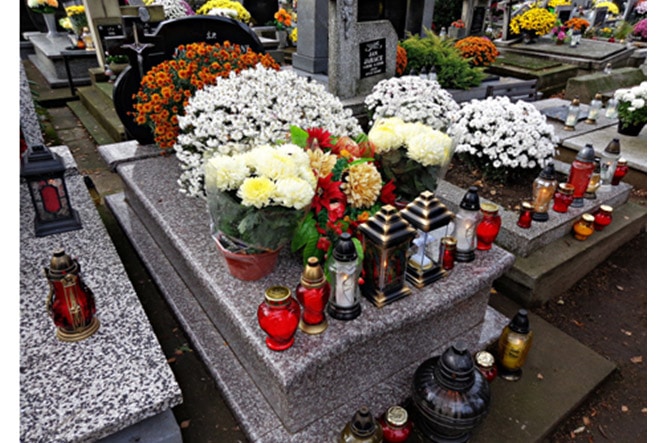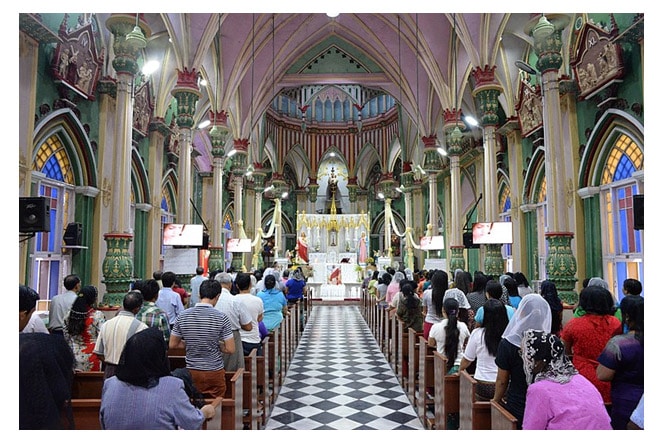All Saints’ Day in the Philippines: How and Where to Celebrate
By: Melecio Martin G. Arranz IV

All Saints’ Day is a Christian festival in honor of all known and unknown Christian saints. Celebrated every November 1, the festival celebrates the life, faith and death of martyrs and saints, especially those who have no designated feast day in the Roman Catholic calendar. It is an important liturgical celebration, next to Christmas and Holy Week. Devotees pray for the intercession of saints and ask guidance in their everyday struggle.
In the Philippines, the holiday is celebrated with much gusto. More than a holy obligation, All Saints’ Day, Todos Los Santos or Undas in the Philippines is a day to remember the dearly departed through prayers, vigils, flowers, food and merriment. Like the Day of the Dead Festival in Mexico, Todos Los Santos is hardly a solemn event. Families come together to flock the cemeteries and memorial parks where they celebrate life, share stories and memories, and pray for the souls for the loved ones who had passed.
How Filipinos Celebrate All Saints’ Day
Repainting the tombstones
A few days before the actual celebration of All Saints’ Day, someone from the family comes to clean up and prepare the grave of their dearly departed. They weed out stray plants, clean the area and repaint the tombstone.
As per Manila North Cemetery issued guidelines, the last day for cleaning and repainting of tombstones is October 29, Monday.
Candles and flowers
Filipinos decorate the graves of their dearly departed with flowers and candles on All Saints’ Day. Graves of children are sometimes decorated with toys and other memorabilia.
Prayers, rosary, novena
Filipinos also celebrate All Saints’ Day for all known and unknown saints of the Catholic Church. Devotees offer prayers and rosaries to the saints and ask for their intercession and guidance.
Some families organize a nine-day prayer meetings or novena prior to All Saints’ Day. The first eight days of the novenas are prayed at home, while the last and final prayer is held in the cemetery.
Pista minatay or atang (Food offering)
The night before the visit to the cemetery, the family prepares the favorite foods of their dearly departed. They offer a portion of the food or atang at the house altar and at the tombstone, while the rest of the food is shared with the rest of the family to recreate the time when the dearly departed were living and sharing meal together.
This important practice is similar with the Hungry Ghost Festival of China and other Asian countries.
Some cemeteries prohibit food and revelry, though. Check your cemetery for rules before bringing any.

Pamisa (Offering a Mass)
Before the mass, the family writes the names of all their dearly departed on a white envelope enclosed with money. They will hand the envelope to the commentator so the names written can be mentioned during the mass and included in prayers of the community.
Pangangaluluwa (Songs for the souls in Purgatory)
In some rural communities, there are singing groups who to go from house to house on the eve of All Saints Day to sing and ask for alms and prayers. These groups are said to portray the souls stuck in purgatory that needs prayers from the living to help them get to heaven.
Walking over bonfire smoke
Some walk or jump over bonfire smoke on their way out of the cemeteries. It is a superstitious practice done to avoid bringing home spirits from the cemetery.
Candles on the doorstep
Those who cannot visit the cemetery, usually light one candle per dearly departed outside the house by the doorstep to honor the dead.
Some families coming home from the cemetery also light candles by their front door to bar the souls from the cemetery from following into the house. People practice this as an old superstition.
Impromptu Reunion
The government declared November 1 as a special non-working holiday to give way to the remembrance of the dead. Paired with the semester break of most schools, families can gather together and hold an impromptu family reunion. In between prayers, they celebrate the life of their late family member with stories, games and sometimes karaoke.
Camping in the cemetery
Some visitors choose spend the night in the cemetery. They likened it to spending time with their dearly departed like when they were living.
What to Prepare When Spending the Night in the Cemetery
Tent and Sleeping bag
Like in any camping situation, you have to bring a tent, sleeping bags, and mats for everyone to be comfortable, and offer a semblance privacy from other campers.
If your dearly departed is resting in a mausoleum, you might have more privacy and might not need a camping tent. Nevertheless, bring mats and blankets for everyone in case it gets too cold.
Insect Repellant
The dead may not mind the mosquitos and bugs, but the living surely needs to apply insect repellant before sundown to avoid the insects from ruining camping night with the dearly departed.
Extra Clothes
Pack at least an extra set of clothes under the “just in case” category. Also remember to bring a jacket and cap to layer your clothes for when it gets cold in the wee hours.
Umbrella
Weather forecasts are not 100% accurate. To be safe than sorry, bring your umbrella.
Food and Water
With all the revelry going on, there should be enough food and beverages to keep the impromptu reunion in full swing. Also, remember to bring enough drinking water for the camping party. Who knows, there might not be a nearby store, or if there is, the price will take out a big chunk of your gas money.
Boredom Busters
In case you run out of things to talk about or to sway the conversation away from family drama, have at least one card game on hand.
First Aid Kit
A first aid kit comes under the “plan for the worse, hope for the best” category in packing. Pack in painkillers, allergy medicines, prescribed medicine, band aids, betadine, and smelling salts.
It is also important that you know where is the nearest police and first aid station. So in case of emergency, you know where to ask for help.
Tips For a Smooth and Easy All Saints’ Day Celebration
• Buy flowers and candles as early as possible. As the occasion approaches, prices of flowers hike up because of the increasing demand on a limited flower supply from Benguet. As much as possible, buy the flowers a week or two early and preserve it at home. You can keep cut flowers fresh by placing them in a vase with preservative solution or storing them in the refrigerator.
• Visit the cemetery a day before or a day after All Saints’ Day to avoid huge crowd.
• Plan your traffic routes. Check for traffic advisories from Metropolitan Manila Development Authority (MMDA) on traffic rerouting schemes in the perimeters of the major cemeteries.
• Secure home before leaving. Make sure to turn off electricity and water tap. Remember to snuff out all candles. Lock the doors and windows.
• Follow police and cemetery guidelines. To avoid inconvenience, do not bring alcohol, knives, and other things prohibited in the cemetery. As per Manila North Cemetery issued guidelines, sharp objects such as knives, screwdrivers, ice picks; pets; sound system; flammable materials such as lighter, thinner, alcohol, and gas; alcoholic drinks; and gambling equipment will not be allowed inside the cemetery.
• Do not leave your children unattended. Bored children may play with the candles around them or get lost in the crowd.
• Bring a Garbage Bag. After a day (and night) of remembering the dearly departed, pick up your trash and take them with you. Do not turn their final resting place into a dumpster.

